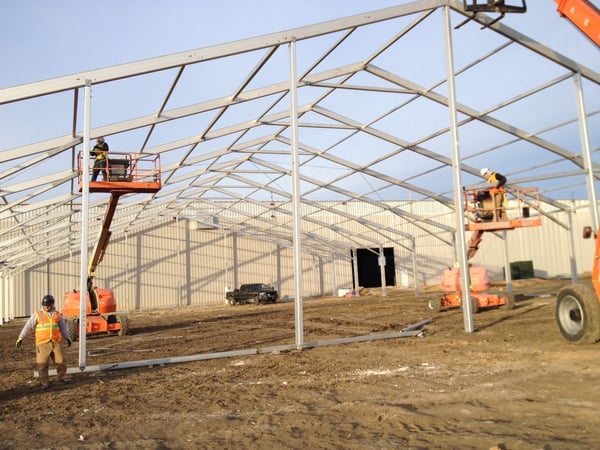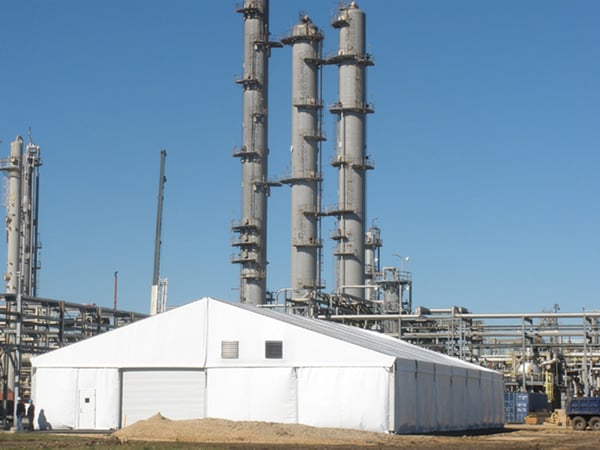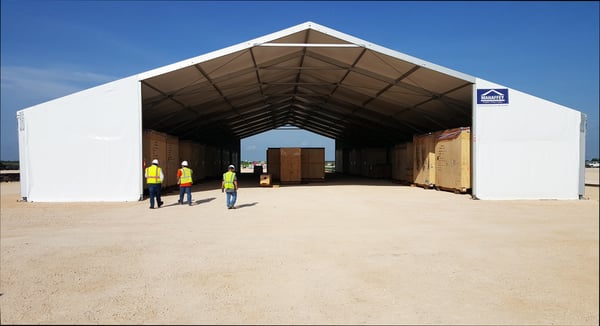You probably already know temporary fabric structures offer you immediate solutions and great flexibility, but before you design your building solution, follow the old advice to start from the ground up. Unlike traditional buildings which have very specific foundation requirements, temporary fabric structures and semi-permanent buildings, like temporary warehouses, can often be built on any ground surface – from concrete and asphalt to gravel, dirt or even packed sand.
Mahaffey USA is now part of Sunbelt Rentals. Learn More
- Industries
- Structures
- Drive-Through Vaccination Structures
- Warehouses & Storage
- Base Camps & Living Facilities
- Blast Shelters
- Construction & Maintenance Covers
- Containment Structures
- Custom Structures
- Extreme Weather Structures
- Hangars
- Hospital & Medical Facilities
- Lunch & Break Areas
- Movable Structures
- Temporary Firehouses
- Amenities (HVAC, Lights)
- Water Services
- Services
- Case Studies
- Blog
- About Us
-
Contact Us










